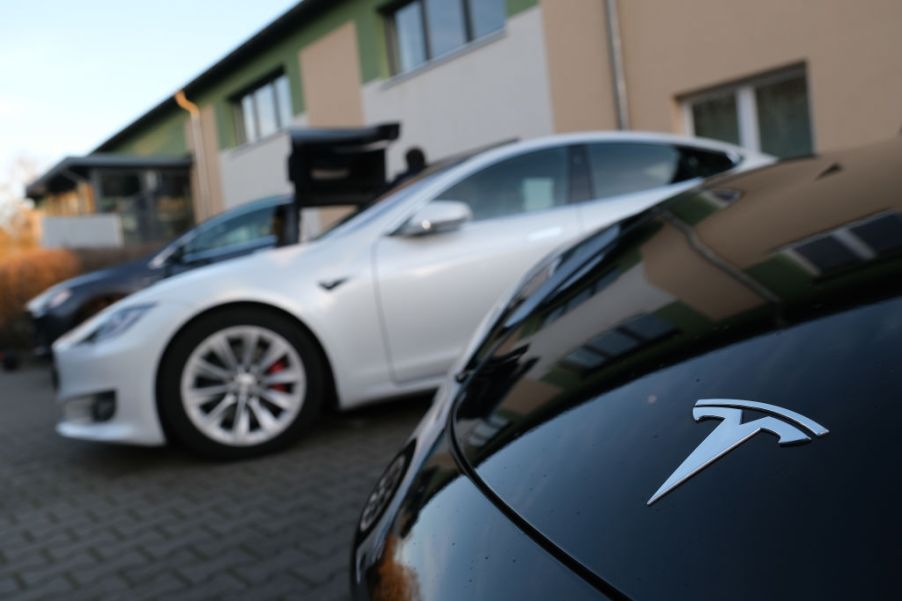
Tesla’s Best Q1 Sales Ever Prove It’s Still on Top of the EV Game
The Tesla brand, with its connections to causes like space exploration and renewable energy, has created a lifestyle image rooted in its electric vehicles. The company’s appeal has helped to increase recent sales and production figures, with the first quarter of 2020 at near-record levels. Here’s a look at the numbers and Tesla’s EV competitors.
Tesla’s 2020 Q1 figures
Tesla just released its first-quarter sales and delivery numbers. While the totals aren’t overall records, they are first-quarter performance records and Tesla’s second-best quarter ever. Tesla produced 102,672 vehicles and delivered about 88,400 vehicles. That’s up 33 percent over last year for production and up 40 percent over last year for sales.
This count far exceeded the company’s delivery expectations, which had been around 79,000 for Q1 2020. These numbers were achieved despite the effects of the COVID-19 virus on production.
Tesla did mention that the delivery count could vary by 0.5 percent or more when final numbers are announced. The company counts conservatively since car deliveries are only counted once the car is transferred to the customer and paperwork is completed. Q1 earnings along with net income, cash flow results, and other financial performance indicators are still to be announced.
Tesla models
Tesla currently offers four vehicles that come in different versions. The Model S sedan arrived in 2012. The Model X is an SUV similar in design to the Model S. The Model 3 is a more affordable sedan, and the Model Y is a compact SUV. The Roadster appeared in 2008 and will return in 2020. The Tesla Cybertruck will join the group in 2021, and Tesla is working on a semi-trailer truck as well.
During the first quarter, Tesla produced 15,390 Model S/Xs and delivered 12,200 of them. The company produced 87,282 units of the Model 3/Y and delivered 76,200. Production of the Model S/X increased 8.7 percent, and production of the Model 3/Y increased 38.6 percent, setting a new record.
Deliveries of the Model S/X were up 1 percent, the first sales increase in five quarters, while deliveries of the Model 3/Y were up 50 percent, setting a new record.
Tesla announced several factors that increased the numbers, saying, “Model Y production started in January and deliveries began in March, significantly ahead of schedule. Additionally, our Shanghai factory continued to achieve record levels of production, despite significant setbacks.”
Other EV automakers

Many auto manufacturers are developing new EV vehicles. According to the Los Angeles Times, Ford, Volkswagen, and Volvo are all pushing to increase the percentage of their vehicles that are electric over the next several years. By the end of 2020, most of the biggest companies will offer at least one electric vehicle. However, in the U.S., buyers aren’t snapping up these new EVs and sales are staying flat.
Tesla is the exception to this EV sales problem. Some attribute Tesla’s success more to its appeal as a lifestyle brand than to the appeal of electric vehicles. Tesla’s sales of the Model 3 increased by 14 percent in the U.S. in 2019, while the car’s global deliveries more than doubled. However, sales of the Model S and Model X had been down for the past three years until the first quarter of 2020.
The second best-selling EV in 2019 after the Tesla Model 3 was the Toyota Prius Prime plug-in hybrid, which has sales 14 percent lower than in 2018. Following the Tesla Model X in third was the pure-electric Chevrolet Bolt, with sales 9 percent lower than in 2018. And, after the Tesla Model S was the Nissan Leaf, with sales 16 percent lower than in 2018.
Luxury EV offerings didn’t do any better with sales in 2019. The Jaguar I-Pace sold only 2,594 SUVs, and the Audi e-tron sold just 5,369. EVs from Hyundai and Kia didn’t do any better either. The Hyundai Kona Electric saw 3,600 sales in 2019, and the Kia Niro sold under 1,000, though it appeared later in the year.
Higher prices for EVs, a lack of charging stations, and a reluctance of dealers to sell EVs all contribute to the slow sales. Despite challenges, a number of new electric models are expected in the next several years. Joining Tesla’s new models will be the Polestar 2, Ford Mustang Mach E, the Rivian truck and SUV, Ford’s electric F-150, and the GMC Hummer EV.


